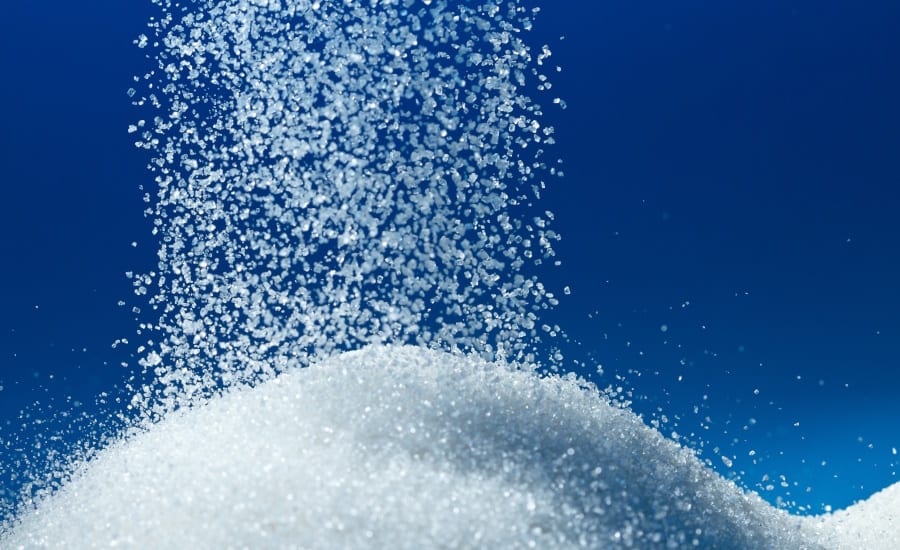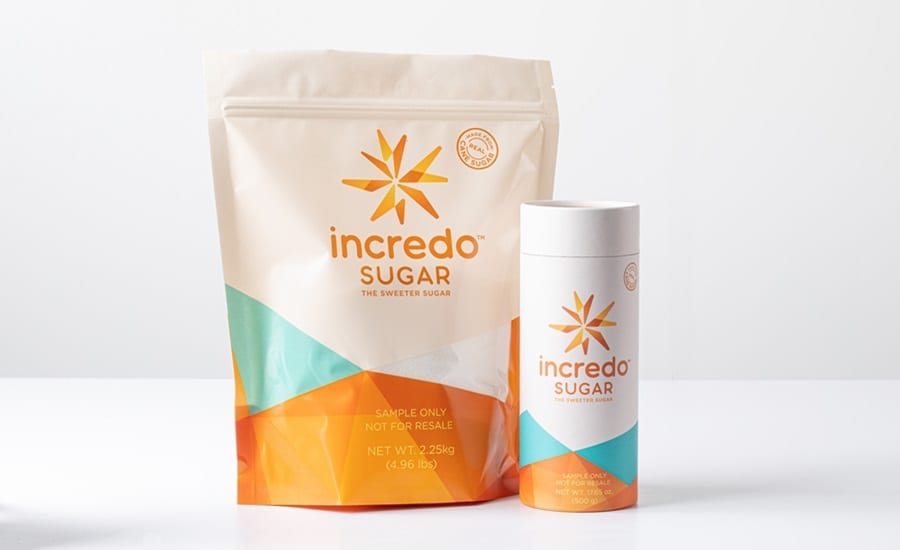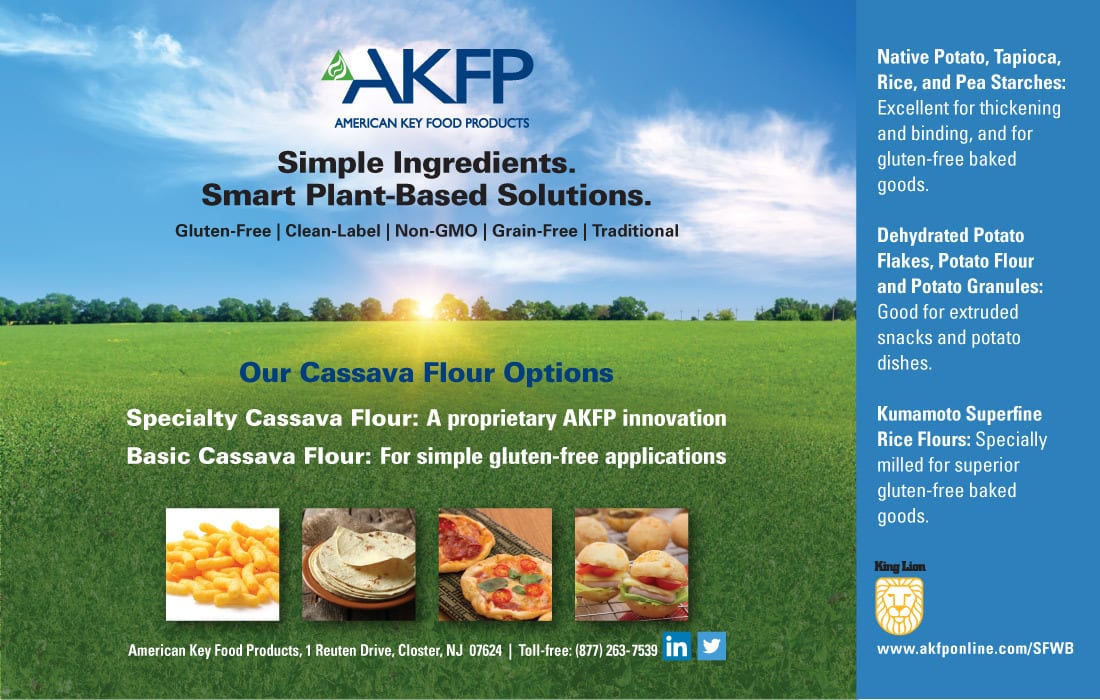Sweeteners and sugar alternatives
INGREDIENTS
The BOTTOM LINE
- U.S. shoppers want natural sweetness in their foods
- Blended sweeteners are increasingly popular
- Functional sweeteners with added benefits like fiber appeal to producers
Naturally sweet
When reaching for low-sugar baked goods and snacks, consumers want the ingredients list to be clean and natural.
Joyce Friedberg, Contributing Writer
Current sweetener trends within the snack and bakery category are focused on sugar reduction. There also is a growing demand for natural sweetening solutions, delivering clean-label benefits without compromising on the taste or texture of products.
Natural solutions
Kash Rocheleau, CEO of Icon Foods, states she has observed an increase in the demand for natural sweetening solutions that are readily identified as coming from natural sources (such as monk fruit and stevia) to support a clean label.
“Functional benefits beyond sweetness, such as prebiotic fibers that support gut health, are increasingly important,” states Rocheleau.
Another example of a natural sweetening solution is a new ingredient Global Organics recently launched. Organic Date Syrup (made from concentrated date juice) is reported to be a versatile, natural, low-glycemic sweetener that delivers a rich, caramel-like flavor. It contains fiber, natural sugars (such as glucose and fructose), vitamins, and minerals.




Courtesy of Icon Foods
Linnea Halter, marketing coordinator for Global Organics, notes, “This syrup shines in a variety of applications: drizzled over pancakes, waffles, and cereal for added sweetness; incorporated into energy bars, granola and snacks for a natural energy boost; or used in baking to enhance cakes, cookies, muffins, and bread with sweetness and moisture-retaining properties. Organic Date Syrup serves as a nutrient rich sugar substitute in health-focused products, offering a lower glycemic index along with potassium, magnesium, and antioxidants.”
Tagatose is a naturally occurring sugar found in various foods, such as fruit and dairy products, and behaves similarly to sucrose in many applications. According to Hannah Dressen, business development manager with Batory Foods, it offers several advantages, like being 90% as sweet as sucrose while containing 60% fewer calories. In addition, tagatose has a low glycemic index (GI of 3), a ketogenic certification, and is also non-GMO Project Verified.
“Unlike sucrose, tagatose is metabolized differently in the body, providing only 1.5 calories per gram instead of the typical four calories,” Dressen explains. “Around 20% of ingested tagatose is absorbed in the small intestine, and the absorbed portion is processed in the liver through the same pathway as fructose. The remaining tagatose is fermented by gut microflora in the colon, producing short chain fatty acids, which contribute to its prebiotic effects. Due to this research, tagatose earned its NutraStrong Prebiotic Verification this past year.”
Tagatose reportedly has been shown to work well in snack and bakery products—for example, in granola bars, tagatose browns similarly to sucrose during baking, and offers binding properties to achieve desired textures. Since tagatose is a bulking sweetener, it delivers both sweetness and textural properties, shares Dressen.
Sarah Diedrich, senior marketing director for global sweetening and texturizing solutions with ADM, says the company is working to expand its sweetening library with specific focus on stevia ingredient innovation.

Courtesy of ADM
“Through our SweetRight Stevia Edge line we’re helping usher in advancements in science, extraction, and enzyme technologies, as well as leveraging agronomy to breed new plant varietals that deliver on the highest performing attributes to the stevia leaf,” she reports.
ADM’s newest addition to its stevia portfolio is SweetRight Stevia Edgility. “This innovative solution delivers on performance and value, with a superior sweetening profile compared to other Rebaudiosides, supporting sugar and calorie reduction, while also assisting product developers with managing costs,” says Diedrich.
According to Diedrich, ADM’s stevia products are suited for bakery bases, fillings, glazes, frosting and cereals, enabling higher levels of sugar reductions compared to other stevia products, and they are less likely to lead to lingering or bitter off-notes.
“These attributes are especially useful for nutritional bars since our stevia mitigates off-notes for a cleaner sweetener profile. For nutrient-dense foods like nutritional bars, it’s particularly crucial for clean taste and ingredients like SweetRight Stevia Edgility to work harmoniously with functional solutions like protein, fiber, and botanicals to deliver great taste,” finishes Diedrich.



Courtesy of Incredo
Blended solutions
Rocheleau notes that functional sweetening solutions that blend natural sweeteners, fiber, sweetness modulators and other items are being utilized more to develop snacks and baked goods that meet consumer expectations for taste and texture, with less sugar.
Icon Foods recently launched new solutions, such as IconiSweet Gold, intended to replicate the taste, texture, and functionality of brown sugar. This blend combines erythritol, allulose, and monk fruit extract with vegetable glycerin, natural flavor, and caramel color to achieve an ingredient solution that measures, tastes, and performs like brown sugar while contributing no added sugar to the Nutrition Facts panel and only has 35 calories per 100 g.
“Allulose provides a sugar-like mouthfeel, flavor, and humectancy while also enabling browning, melting, and caramelization,” says Rocheleau. “Erythritol enhances sweetness, replaces volume, and contributes to a structure similar to sugar. Its low molecular weight lowers water activity, extending shelf life in baked goods. Monk fruit extract, a high-intensity sweetener, brings the blend to sugar-equivalent sweetness.”
IconiSweet Gold can be used in a variety of snack and bakery applications to reduce or replace brown sugar. Rocheleau says it works well in snack bars, especially those that rely on brown sugar for binding and flavor, helping to reduce sugar content without sacrificing taste or functionality. Additionally, baked goods like muffins, quick breads, and caramel-flavored pastries can benefit from its use to replicate the rich, molasses-like notes of brown sugar, she says.
Icon Foods also recently introduced an organic version of its FibRefine P90 Soluble Tapioca Fiber. This ingredient is a prebiotic-fiber reportedly known for its smooth and neutral flavor profile and ability to reduce added sugar, enhance mouthfeel and support a healthy gut microbiome. Also known as cassava root fiber, this fiber is a digestive-resistant maltodextrin.
“Functional benefits beyond sweetness, such as prebiotic fibers that support gut health, are increasingly important.”
— Kash Rocheleau, CEO, Icon Foods

Sugar-reduction tools
Incredo recently introduced its Incredo Sugar G2 product. Intended to build off the success of Incredo Sugar, the G2 item is said to offer a more concentrated, sugar-based solution that enables up to 70% sugar reductions in formulations.
“Incredo Sugar G2 works with your existing sugar to achieve sugar reduction, pioneering an innovative and unique approach,” explains Kelly Thompson, co-CEO and commercial lead. “By improving the efficiency of sugar delivery to sweet taste receptors, it enhances the perception of sweetness while maintaining the familiar flavor that consumers love.”
According to Thompson, Incredo Sugar G2 has the following features:
- Labels as cane or beet sugar and protein
- Is a powdered blend
- Is a micro ingredient that works in combination with traditional white sugar. It offers increased flexibility, allowing it to be added at different points in the manufacturing process.
- Is available in in both dairy-based and plant-based options




